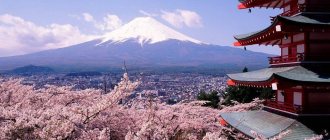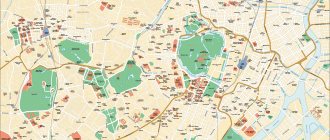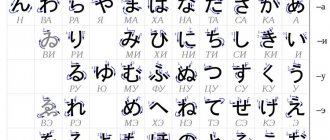The history of the development of Japanese music is clearly divided into several stages, corresponding to important periods of economic and cultural development of Japan. During archaeological excavations on the Japanese islands, an ocarina and a stone whistle were discovered. These instruments date from the Jomon . The use of ceramic vessels as percussion instruments is not excluded. The society of that time is characterized as a society of fishermen, gatherers and hunters, whose spiritual life was dominated by magic. Music, naturally, was part of magical rituals.
During the Choi period , music accompanied funeral rites and agricultural rites. The strengthening of the processes of ethnic unification, assimilation and integration led to the formation of a state during the Confun period (3rd - early 5th century) . Formation of Yamato , the mythological system of Shinto , as well as the folklore mysteries of the Kagura , which synthesized various ritual songs and dances.
The palace musical culture of the medieval states of the continent reflected a different musical level of thinking and was closely connected with Buddhist and Confucian doctrines.
In 710, a special service was formed at the court of the Japanese emperor, in charge of matters of palace ceremonial and accompanying music - gagakuryo . One of the functions of gagakuryo was to introduce the feudal aristocracy to the musical culture of the continent and, first of all, to the palace traditions of medieval states.
With the advent of modern times, almost the entire variety of music of the imperial court was united by the term gagaku . Currently, training in the traditions of gagaku, as one of the types of national musical classics, is carried out at the Tokyo University of Arts and the State Conservatory, and there are societies of gagaku lovers.
In urban culture, along with palace music, modern-style songs performed by professional singers and dancers, entertaining skits, and dengaku , closely related to agricultural rituals, were popular among various segments of the population. During the Ashigaka period (1336-1573), various musical theater traditions began to be synthesized into a unique cultural complex - noh theater. Folklore performances were held at churches and were of an illustrative and narrative nature. After the fall of the Tokugawa shogunate, noh theater became public. At the turn of the 16th-17th centuries. a puppet theater arose.
After the bourgeois Meiji Revolution, an active process of assimilation of European musical culture began, for which traditional institutions were initially used, in particular the gagaku department . However, already in 1872, teaching singing in the European style was introduced in schools, and in 1887 the Tokyo Music School , where teaching was carried out with the help of cultural figures invited from Europe and America. The concert activities of a number of European performers began. , Japanese composers began to become active .
After the end of the First World War, the artistic principles of various European movements were mastered, and elements of traditional Japanese music . The largest organization of Japanese musicians was the Japan League of Contemporary Composers .
After the end of World War II, Japanese musicians rapidly mastered various types of performing and composing techniques. In 1946, the Japan League of Modern Composers . Orchestras and opera troupes were organized, new music schools and colleges were opened, and many small associations of composers arose. Compositions were created in the traditions of European music of the 19th – early. 20th centuries and dodecaphonic technique. In 1955, an electronic music studio opened. Contemporary music festivals have begun.
Sources of knowledge about Japanese traditional music
Among the sources of knowledge about the traditional music of Japan, it is necessary to name archaeological sites, Chinese dynastic chronicles, Japanese historical chronicles, chronicles of the imperial court, Buddhist and Shinto religious records, literary monuments, dramatic works, legislative codes. Undoubtedly, musical notations are valuable sources, the study of which is of particular interest, if only because they are completely different from the European notation system. It was not until the end of the 19th century that Japanese music began to be written in European notation, and before that a system borrowed from China was used of marks, lines and various shapes to the right or left of the text to indicate strings, tablature, rhythm, tempo and shades . Moreover, since, unlike the European system, it was not a specific note that was designated, but a string or the arrangement of fingers on the flute, and the rhythm was not completely prescribed, but only a rhythmic pattern was specified, then, without knowing the melody in advance, it was impossible to play the notes. In addition, badges and figurines differed depending not only on the musical instrument, but also on the school within the same genre. Therefore, the study of Japanese music from musical notations has limitations and requires detailed knowledge of one or another notation system. Also, many song and story works were passed down from generation to generation by ear and were not recorded, therefore, unfortunately, a significant part of folk music has been lost.
Knowledge of ancient music in Japan is based almost exclusively on archaeological evidence, for example, clay haniwa figurines provide insights into the instruments of the time: the Yamato -bue wagon lute or Yamato-goto and other primitive instruments.
The first written mentions of Japanese music appear in Chinese chronicles. Thus, the chronicles of the 3rd century of the Chinese dynasty Wei Zhi talk about a trip to Japan and the songs and dances of the ritual rite.
There is a story dating back to the 3rd century about Korean musicians instructing the Japanese to preserve ship wood as it was ideal for making instruments.
Music is further mentioned in the Japanese chronicles Kojiki (712) and Nihon Shoki (720). Thus, the Nihonshoki reports that in 454, 80 Korean musicians were sent to the Japanese capital to perform music on the occasion of the death of Emperor Ingyo.
The Shoku Nihongi, a historical chronicle from the 8th century, talks about music for ritual initiations in Buddhist and Shinto shrines.
Religious recordings are an important source, as music was invariably associated with the rituals of Shinto and Buddhism.
The Manyoshu, the greatest poetry anthology of the 8th century, contains more than 4,000 poems, many of which are considered folk songs reworked in an aristocratic style. The theme of music appears in both The Tale of Genji and other literary works of later times.
Legislative codes and acts reflect the institutional basis of musical development: for example, the Taihoryo code of laws establishes the administration of gagaku.
Traditional and classical Japanese music
Having started an article on a topic that seemed quite familiar to me, I already knew that I would write about modern Japanese instrumental music. The matter seemed completely uncomplicated; just add a little historical information and you’re done! Growing up on the generally accepted European history of the development of classical music, I naively believed: as in the West, so everywhere. For it is no secret to anyone that borrowing in this kind of art is common. First vocals, then organ, harpsichord-clavichord-piano, violin, and so on down the list. However, upon opening the first work on music, I froze in silent horror. I did not expect to see so much unknown and rather incomprehensible text, generously flavored with hard-to-read and hard-to-pronounce words (with which I immediately replenished my stock of curse words). But, with patience, I found all the available options for works (of which there are actually not many) and decided to compare the generally accepted history of music with the Japanese one.
It is known that modern music originates from two sources, which are folk modes (work and ritual songs) and religious chants. Initially, it (like, in general, any other art) was the property of wealthy people, and not at all “national”. Moreover, any music in its development has always been influenced by religion, since it was often used as a means of controlling the masses. Only much later, with the development of tools and a decrease in the religious component, did it absorb the features of folk songs, become “secular” and go to the masses. Church polyphonic chorales in Europe, at first tonally strict, over time organically mixed with folk, everyday motifs. This was the case in Japan, where initially musical development was greatly influenced by such religious movements as Shintoism, Buddhism, and Taoism. But, despite the similar paths, the outcome of the development of the two geographical components is strikingly different from each other. Presumably, the fact is that church music, first of all, focused people's attention on itself. It, together with the text, was an instrument of influence, inspiring and bewitching listeners. The purpose of Japanese music was completely different. It was philosophical and meditative in nature and was not intended to attract attention. The original principle was “background”, which made it possible to accompany the action, be it a tea ceremony, contemplation, calligraphy or dance. Music, above all, promoted creativity. It should be mentioned that in Japan, along with the folklore (original) musical form, there were many forms of borrowed and adapted foreign musical styles (the number significantly prevailed over the traditional ones), which are now considered native folk.
In order not to bore the reader with an abundance of specific terms and names, we will give only the most general historical chain of development of music in Japan, noting only the key points.
The two oldest forms of Japanese music are Buddhist chanting shomyo
and orchestral gagaku music.
They date back to the Nara (710-794) and Heian (794-1185) periods. And, if everything is more or less clear with the chants, then gagaku
was orchestral music without any vocal part.
With the approval of the authorities, gagaku became the music of palace rituals. The Kamakura period (1185–1333) and throughout the Muromachi era (1333–1568) saw the development of folk theater, which grew out of ritual plays and peasant dances performed during the rice planting period. By the end of the 14th century, artistic drama began to develop, accompanied by hogaku
and dance known as
shimai
.
Hogaku
consists of two elements: vocal (
utai
- a song-story about an event, which is performed by two actors and a choir of eight singers) and instrumental (
hayashi
- performed on a bamboo flute and three drums). By the way, Western music, represented by church music, appeared in Japan in 1549, along with Christian missionaries, but disappeared with the ban on Christianity.
During the Azuchi-Momoyama period (1568–1600), several musical instruments underwent notable changes and modifications.
Thus, the primitive flute turned into an artistic shakuhachi
, and the old palace zither became a more sonorous koto.
Several styles appear in singing, such as gidayu-bushi
(the narrative part in Bunraku puppet theater), or
kiyomoto
and
tokiwazu
, which often act as accompaniment for Kabuki dance.
As for modern times, we can talk about two main directions of classical music. Firstly, these are enka
, and secondly, classical music that came from the West.
Enka
are Japanese popular songs, sad and soulful ballads about lost love, about homesickness, which as a genre were formed back in the 30s of the last century and have received new development since the early 70s. As for Western classics, in Japan its development has acquired truly large-scale forms. From the construction of special halls with excellent acoustics to the expansion of standard music education, where numerous elements of Western classical music were introduced. It is noteworthy that the piano became one of the favorite borrowed instruments of the Japanese. Now in Japan there are several large companies that produce grand pianos, synthesizers and upright pianos that are recognized internationally. The most famous of them are Yamaha and Kawai. Even one of the most famous Russian performers, Svyatoslav Richter, noted the quality of Japanese pianos.
By the way, piano inserts are constantly found in anime soundtracks, including in the works of Yoko Kanno, Yuki Kajiura, and many other famous anime composers. And, despite the fact that the structure of the melodies, unlike foreign instrumentals, is usually quite simple, if not primitive, the melodies themselves are very pleasant to the ear. And even people who don’t like classics precisely because of their complexity are happy to add soundtracks from their favorite anime to their playlists.
The Koto
, a Japanese harp, was brought to Japan from China about a thousand years ago.
Playing it is considered a mandatory attribute of an aristocratically educated person. Today, koto
fits organically into modern Japanese music and is used in two versions depending on size: - 1 m long (7 strings) for solo performance;
— up to 2 m long (from 13 strings) for orchestral performance. The Shakuhachi
, a Japanese bamboo flute, also begins its history in China. Its length is a little more than 50 cm. It is positioned as a folk instrument because it is simple and inexpensive to perform. Used by Zen monks during meditation.
Shamisen
is the Japanese equivalent of a lute. A three-stringed instrument whose history goes back only five centuries. Playing the shamisen is an indicator of the depth of education of a geisha. In addition, shamisen is a mandatory accessory and participant in Japanese theatrical performances.
Suikinkutsu
is an inverted jug buried in the ground with water flowing over it.
Getting inside through the holes, it makes a sound similar to a bell. The most beautiful sound is obtained when using ceramic jugs, but nowadays metal ones are increasingly used. Suikinkutsu
is a common attribute of the Japanese garden and is even used to create the necessary mood before a tea ceremony.
Anime sample article: Nodame Cantabile / Nodame Cantabile
Japanese music during the war and post-war years
Since 1941, Western music has been performed mainly by the Tokyo Symphony Orchestra . In 1945 it was renamed the Toho Symphony Orchestra , the New Symphony Orchestra became the NHK (Japan Broadcasting Corporation) Orchestra, and many other symphonies began to appear.
There is also a movement of Roon workers to introduce the working people to musical culture.
Japanese composers of this time, when composing operas, took Japanese tales and Buddhist legends as a basis.
In 1951, an electronic music studio opened at NHK.
The Japan Contemporary Music Association , which existed before the war under other names and organized festivals every year, the Association of Contemporary Composers (1946), Shinseikai (1946), Chijinkai (1948) and the experimental studio Jikken Kobokai (1949) were created
In the 60s group, the Ongaku and New Direction groups appeared, advocating improvisation, but many groups composed music for the Nipponia Orchestra, consisting of traditional instruments.
Foreign musicians began to visit Japan again from the mid-1950s, and Japanese musicians and composers also became famous abroad.
Currently, Western music is thriving in Japan. Teaching, performance, musical literature, instrument making - all this is now not inferior to Europe. There are six symphony orchestras in Tokyo, and all types of Western music are performed and composed in Japan, from Renaissance and Baroque music to jazz, rock and other contemporary styles. The confrontation between Western and traditional music remains, but is not expressed as clearly as it was before.








